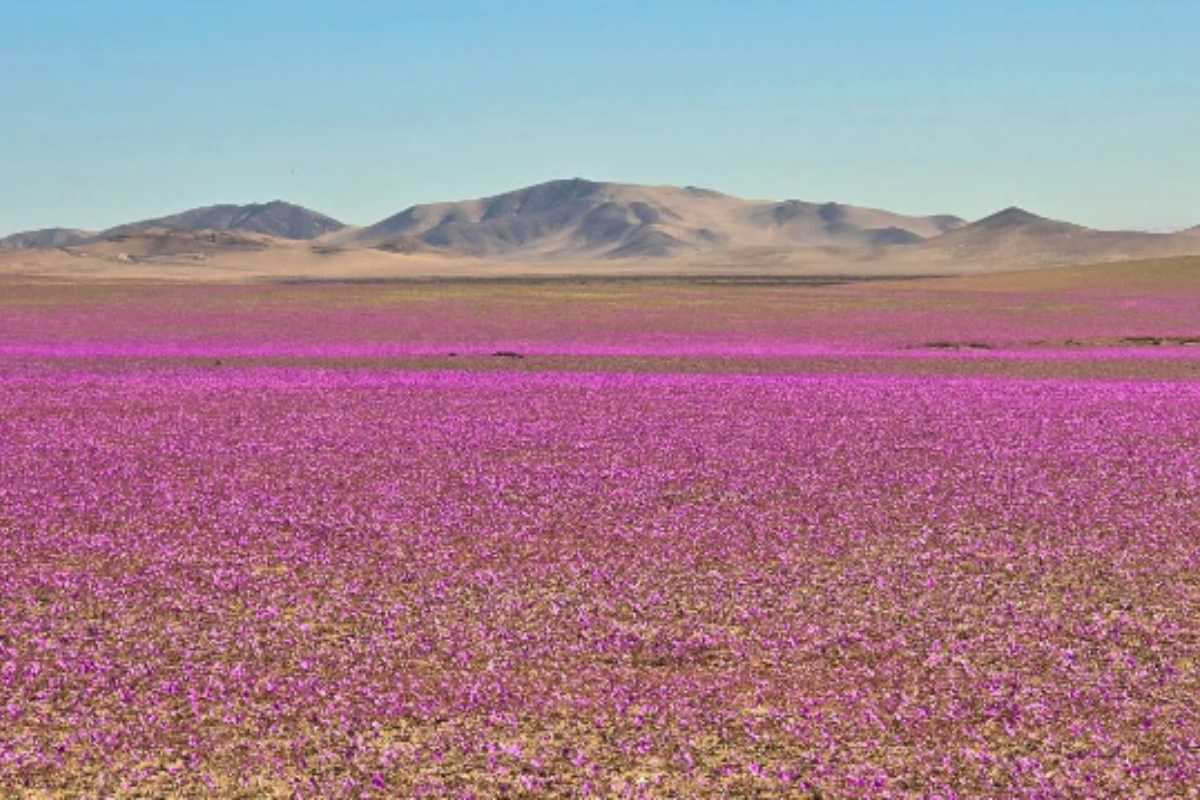The "flowery desert" in Atacama has already bloomed this year, although this usually happens in mid-August due to the exceptional rains this winter

@gysmedely/Instagram
The “Blooming Desert” phenomenon in the National Park of the Blooming Desert, located in the Atacama region, has surprised everyone this year with an early bloom starting in early July. Gyslaine Medely, a geologist with the Corporation of Paleontology and Natural History, documented this natural wonder with photographs showing unusual blooms for this time of year.
Exceptional early bloom
Typically, blooms are expected towards the end of summer, between mid-August and all of September. Experts attribute this early bloom to exceptional winter rains, with over 2 inches of rain in some areas, creating ideal conditions for the phenomenon to occur earlier than usual.
Conservation and visitor responsibility
The main blooms are found within the boundaries of the National Park of the Blooming Desert. However, the area lacks adequate infrastructure to accommodate tourists, making responsible behavior by visitors crucial. It is important to avoid driving vehicles into the blooming areas, not to trample the flowers, and always to respect the ecosystems, taking away only the experience and photographs as souvenirs.
Around 200 species can bloom
The blooming desert event occurs annually. This year, the combination of rain and favorable temperatures allowed plants to germinate early and may extend even further due to current weather conditions. The duration of the flowers will depend on temperatures and humidity, with cloudy periods potentially extending the bloom into October.
Floral species that can be admired include Patas de Guanaco, Añañuca, Ajillo, and Calandrina, among others, along with perennial shrubs that will sprout more leaves. According to the National Forestry Corporation (Conaf), around 200 species can germinate in these moist conditions in the Atacama Desert, especially in the coastal area.
A spectacle and an indicator
This natural phenomenon, which colors one of the driest deserts in the world, represents not only a visual spectacle but also an important indicator of climate variations and water resources in the region. As mentioned, if visiting this wonder, it is essential to do so with respect, contributing to the conservation of this precious ecosystem.
